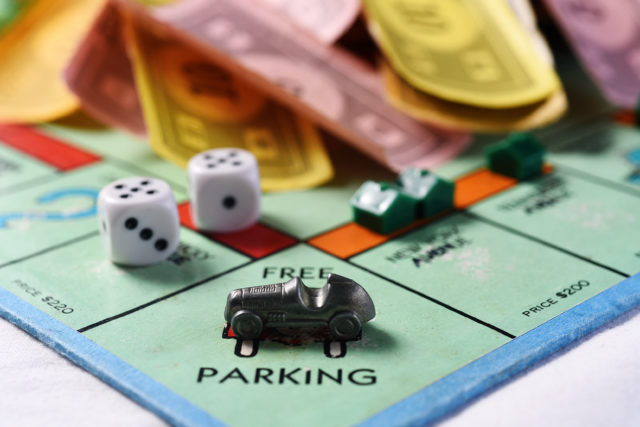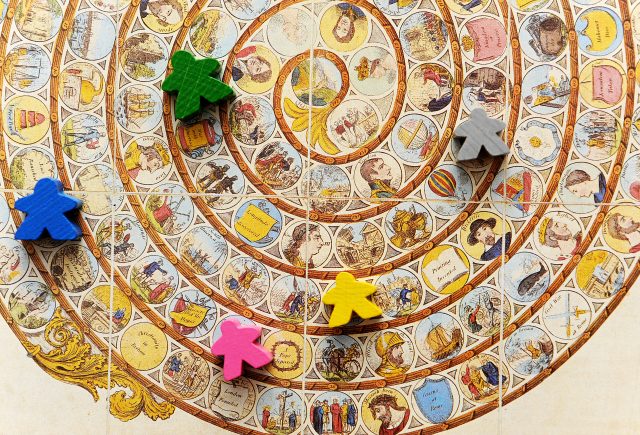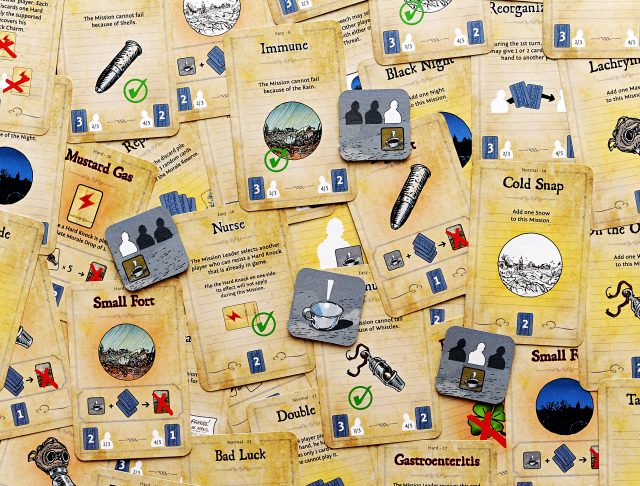We talk a lot about the art of board games, and of the various creative aspects that have to come together to make them work as a whole. However, one question I find myself asking a lot is if board games themselves should be considered art.
Throughout history, new forms of art have always been questioned and rejected by the establishment. What is and is not art has been a debate that has raged on for centuries, and the one thing that is proven time and time again, is that art establishes its own rules and then breaks them.
Whenever you look to make a definition of this nature, it’s good to establish your terms so that you know everyone is on the same page. Art is generally defined as the expression or application of human creativity. By that simple and loose phrasing, I certainly believe board games fit the mould.
However, some people require creative efforts to have a message of some kind behind them before they can truly be considered art. With that in mind, the classification of board games becomes a little trickier.

Over the years, many board games have been designed with a message to share with the players. Famously, Monopoly was originally called The Landlord’s Game. Developed in the early 20th century by Elizabeth Magie, The Landlord’s Game was intended to teach of the dangers of land grabbing, and how a rent-based system would always enrich the landlord and impoverish the tenants.
Many other games that have been published have a core lesson to teach, whether it’s about the horrors of war, how economic systems work, the necessity of cooperation and trade, or just simple things like waiting for your turn, or learning how to experience loss. All of these are valuable for people to experience, but does that make them art?
To approach this idea from a different angle, we can consider other media forms that are sometimes on the fence between art and simple creative outputs. Movies are a huge business and a favourite form of entertainment around the world. Certainly, many of the movies that have been made over time are considered art, but it’s a hard stretch to call every film ever produced a work of art (no offense to Paul Blart: Mall Cop 2).

When we look at it through this lens, it seems clear that while some movies are considered art, not all of them are. Sure, they still represent a creative output, and one may argue that they all have some message or point of view (their narrative nature pretty much demands it), but those elements on their own are not enough to define something as a work of art.
One thing that separates games from a lot of the things we’d consider art is the way we experience them. A beautiful film, an engaging painting, and even a song that gets stuck in our head, no matter how much these artistic works affect us, our interaction with them is largely passive. In a much more tangible way, board games are meant to be interacted with. In this way, they have a lot in common with video games.
If you’ve played video games recently, you know the level of depth, storytelling, and beauty that they can possess. Still, to this day, there are critics who refuse to give them their due. When the Modern Museum of Art (MoMA) held an exhibit of 14 video games, one critic took aim, stating that because of the interactivity of the medium, no artist could claim an authorial vision. Essentially, because, each person to experience the game will take a different path, there is no single piece of art.

I can’t agree with this sentiment at all. While, like movies, not all video games are “works of art”, I do think, as a whole, they can be considered art. Many of them play out like interactive movies, where the person experiencing them slowly discovers information and works their way through the mysteries the designers put in place for them. It is this interactivity that, arguably, makes the game art.
This brings us back to board games. Modern tabletop games are all about the human interactions they create. One of the major reasons for the resurgence in the hobby is the lack of real human contact we get in our digital world. Being able to pick up pieces, roll dice, and collect coins are all the sort of analog joys that are missing from our modern world. Yes, every time we experience a game it will be different. It is guaranteed to be, due to all the variable elements involved. I think that the interactions the game produces are the art of a board game.

The elements of a board game (art, components, rules, etc.) are not the essence of that game. It takes human interaction to animate those elements and turn a game in what it’s actually designed to be. Certainly, while the elements of the game are artistic, I think the real art is the experience they produce, the interaction of the players, the tough decisions you make in the heat of the game, the drama of a lucky dice roll, and the stories you tell about the game afterwards.
Just like movies, video games, books, and paintings, not every board game is a work of art (and honestly, not every game is trying to be). The designers, artists, playtesters, and publishers all lend their creative input to create a whole. From that whole, we get to not only witness art, we get to experience art.
There may still be people that need to be convinced that board games are art, but just like early impressionists had to fight to be recognized, board games will get their due.
This article originally appeared as a CMON Feature Friday piece.
Great article! Really enjoyed how you linked the experience of playing board games to art. It is the interactive involvement of board games that is the real artistic expression, not to mention the visual elements of the board, game cards and sometimes even the playing pieces.
Thanks!
A thoughtful discussion and well illustrated with words and images. One could easily consider to see actual game boards on museum walls.
Defintely board games are art.
But they are more. Like architecture they combine art and engineering because they are not only creative and beautiful, but they also have to work.
Hi Sean! Thanks for the beautiful and thoughtful article. As an artist and game designer, I’m a bit biased since I agree with your conclusion 😉 But as the hobby grows, I’m glad these kinds of conversations are being had.
On a related note, I humbly invite you and your readers to keep considering this issue by listening to episode 19.05 of Who What Why to hear me and Randy Hoyt (owner of Foxtrot Games) discuss this topic at length.
https://whowhatwhycast.tumblr.com/post/175448237569/who-what-why-s19e05-are-board-games-art